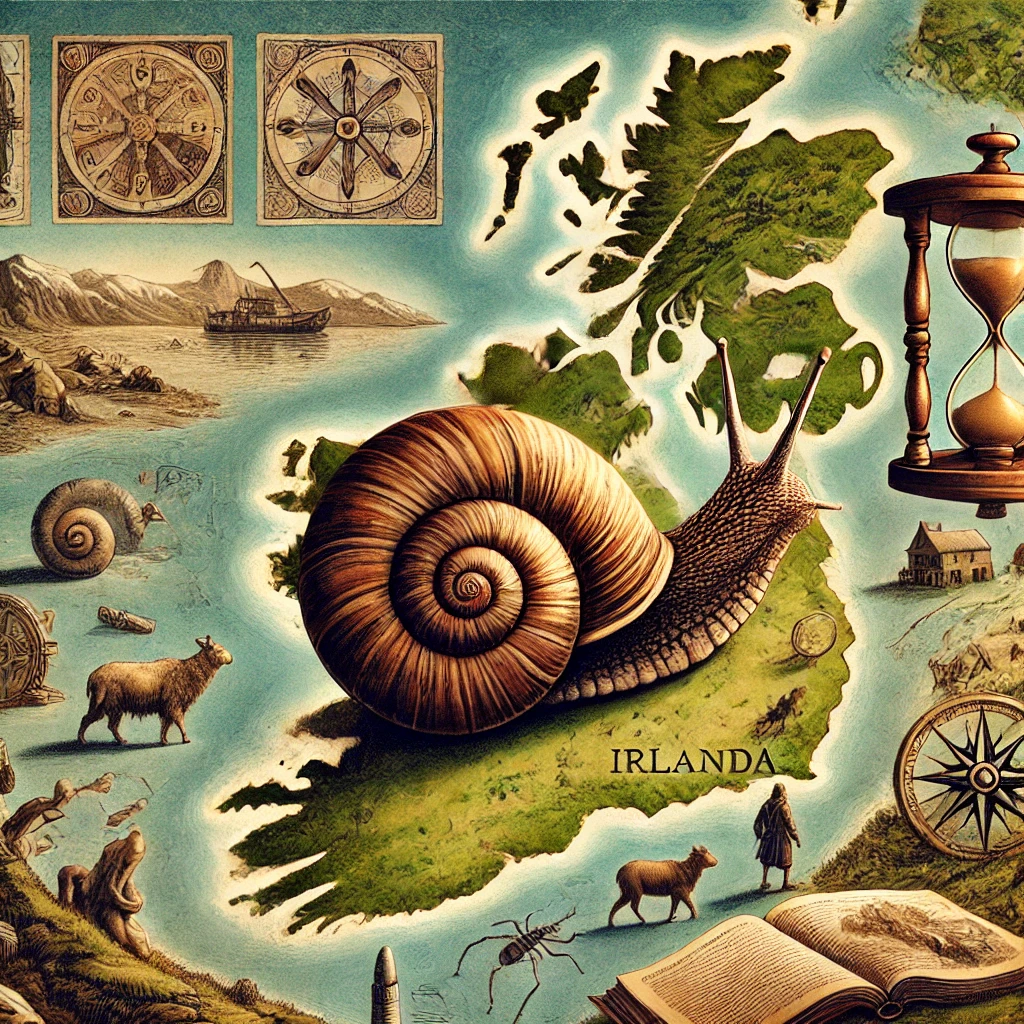Gaur 8.000 urte Pirinioetatik Irlandarako giza atzerriratzea iradokitzen dute Cepaea nemoralisdelako barraskiloek bi eskualdetan dituzten fenotipo (maskorretan) eta genotipo (gene mitokondrialetan) berdintasunek. Angus Davisonek eta Adele Grindonek, Nottingham Unibertsitatekoak (Erresuma Batuan), idatzi dute hori PLOS One aldizkarian. Berezko migrazioa egin izan balute barraskiloek Europako beste eremu batzuetan ikusiko ziren, batez ere Britaina handian, eta ez da horrela. Barraskiloak oharkabean edo nahita garraiatuak izan zitezkeen, elikagai gisa erabiliak izateko jomugan (arkeologia erregistroen arabera horrela zen Auñamendietan eta).
Irish Cepaea nemoralis Land Snails Have a Cryptic Franco-Iberian Origin That Is Most Easily Explained by the Movements of Mesolithic Humans.
Una migración humana hace 8.000 años desde los Pirineos a Irlanda es sugerida por caracoles Cepaea nemoralis
(OHARRA/NOTA: POST MOGITUA; POST MOVIDO)
Posta hobetzen saiatzen erratu, atzindu eta berriz igotzean iruzkinak galdu dira. Aitzin iruzkinak ezin direnez berreskuratu; eskuz saiatu naiz Disqu´tik. Norbait ez badago ados jarritakoarekin, abiza nazala eta parka diezazkidala eragozpenak.
Al intentar mejorar el post, por error lo he borrado y aunque he podido recuperarlo, los comentarios se han perdido al cambiar el código del post. He subido la mayoría desde Disqu; si alguien no está contento con la posición o le ve errores que me lo comunique por favor. Y perdón por las molestias.
Irish Cepaea nemoralis Land Snails Have a Cryptic Franco-Iberian Origin That Is Most Easily Explained by the Movements of Mesolithic Humans. The origins of flora and fauna that are only found in Ireland and Iberia, but which are absent from intervening countries, is one of the enduring questions of biogeography. By far the majority of Irish individuals of Cepaea have a lineage, C, that in mainland Europe was only found in a restricted region of the Eastern Pyrenees. A past extinction of lineage C in the rest of Europe cannot be ruled out, but as there is a more than 8000 year continuous record of Cepaea fossils in Ireland, the species has long been a food source in the Pyrenees, and the Garonne river that flanks the Pyrenees is an ancient human route to the Atlantic, then they suggest movements of Mesolithic humans.
Una migración humana hace 8.000 años desde los Pirineos a Irlanda es sugerida por Angus Davison y Adele Grindon, de la Universidad de Nottingham, en el Reino Unido, pues caracoles Cepaea nemoralis de ambas zonas comparten patrones similares (en sus caparazones y genes mitocondriales) raramente vistos en otras áreas de Europa (si los caracoles hubieran colonizado Irlanda de forma natural, sería lógico encontrar el mismo tipo genético en otras áreas de Europa, especialmente en Gran Bretaña). Los caracoles pudieron ser transportados inadvertidamente o quizá intencionadamente para disponerse en el destino como alimento (hay registros arqueológicos de que así era en el lugar de partida).


